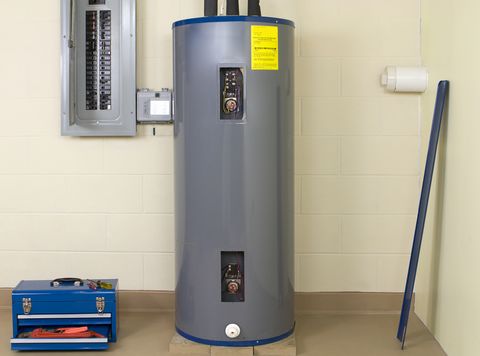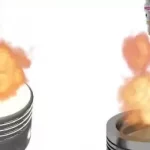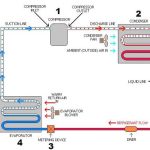Almost everyone uses a water heater in day to day life. But how many of us have the exact idea of how it works and how the cold water is converted to hot water? What are the elements that are used for this process?
Introduction
● We use hot water for various purposes in daily life. For domestic purposes like cooking, bathing, etc. or for industrial purposes, we require hot water. Water heating is a thermodynamic process where a source of energy is used to heat water. The energy source may be natural gas, liquefied petroleum gas, propane, oil, or electricity. Now-a-days solar energy is also used for the water heating process.
Parts of an Electric Water Heater
● For the process of heating water we need three main components. They are:
○ Dip Tube (Inlet tube): Cold water enters the tank through this tube.
○ Outlet Tube: Hot water goes out of the tank through this tube.
○ Heating element: This element helps in heating the cold water.
● There are various other parts used in a water heater.
○ Steel tank: This unit holds the water. The steel tank has to be constructed in such a way that it should be able to withstand the pressure of water inside the tank.
○ Temperature and Pressure relief valve: These valves are specially placed for safety purposes. This valve prevents the heater from explosion during abnormal conditions like high pressure and temperature. It can be mounted either at the top of the tank or at the sides of the tank.
○ Drain Valve: The drain valve is used for cleaning and maintenance.
○ Thermostat: A thermostat is generally used to control or maintain the temperature within the tank.
○ Anticorrosion Anode Rod: This rod, also known as a sacrificial anode rod, aids in keeping the steel tank free from corrosion. This rod is made up of magnesium, which attracts corrosive elements and thus prevents the tank from corroding. This rod can be replaced when it becomes eroded.
● Apart from this there is insulation provided that surrounds the steel tank of the heater.
● The steel tank is internally coated with an epoxy or glass lining to prevent corrosion (in addition to anticorrosion rod).
How Electric Water Heaters Work
● Generally electric water heaters have two heating elements each wired with a thermostat. Both the heating elements do not function simultaneously. First the top heating element functions until the upper tank is hot and then the function is transferred to the bottom heating element, which has its own thermostat. Usually the water in the upper tank is heated from 120-140 F before the control is transferred to the lower heating element.
● But some heaters have only one heating element which makes maintenance easier. In case of heating element failure it can be detected and replaced easily when there is only one heating element.
● When the hot water is consumed, once again cold water enters through the dip tube and the process is repeated.

Gas Water heater
● The gas water heater is very similar in construction to the electric water heater. Here instead of electric supply, there is a gas supply. Instead of heating elements, there is a burner and burner control. The burner is used for heating the water in gas water heaters.
● The working principle is based on law of convection. The cold water always remains at the bottom as it is denser than the hot water. As the water gets heated up it expands and moves to the top of the tank. If you look at the construction, we can see that the outlet tube is always smaller than the dip tube (inlet tube). This is to ensure that cold water is not supplied and only hot water is supplied through the tube. There is also a flue exhaust in gas type water heater which acts as heat exchanger as well as is used in exhausting the combustion gasses.



